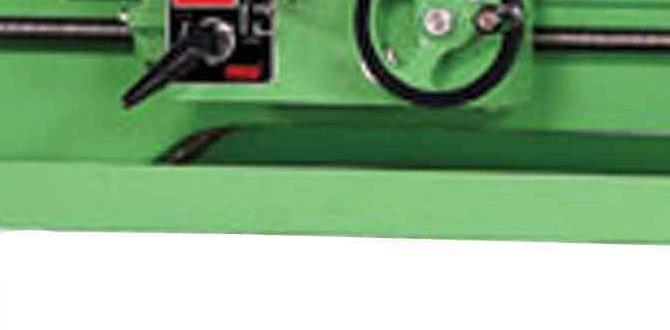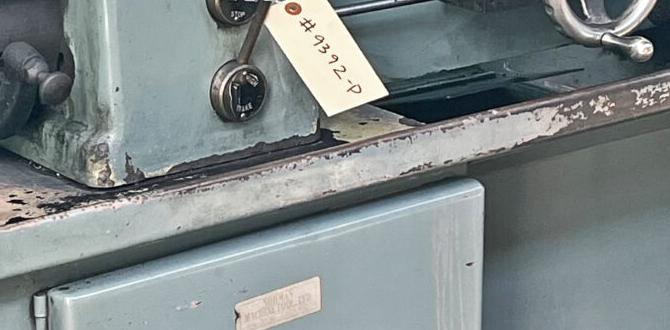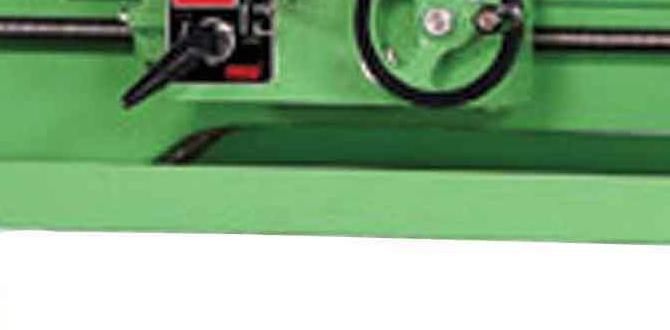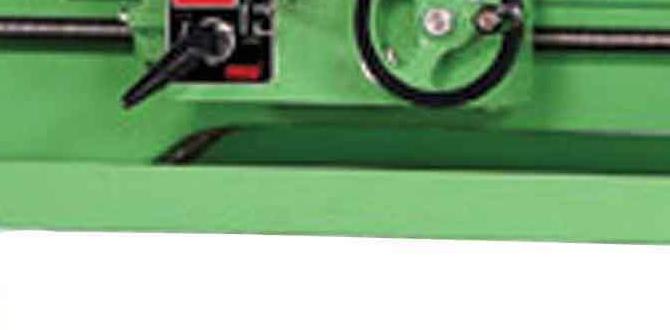Homemade wood lathe duplicator plans can unlock a new level of precision and efficiency for woodturners of all skill levels. The ability to replicate turned components with accuracy, whether for matching existing parts, creating sets of identical items, or simply streamlining your workflow, is a significant advantage. While commercial duplicators exist, building your own offers a rewarding hands-on experience and the flexibility to customize a tool to your specific needs and budget. This guide will delve into the fundamentals of designing and constructing your own wood lathe duplicator, exploring key considerations and providing a framework for your project.
Understanding the Core Principles of a Wood Lathe Duplicator
At its heart, a lathe duplicator operates on a simple yet ingenious principle: guided movement. A template, which is essentially a representation of the desired shape, guides a cutting tool or stylus that mirrors its contours onto a workpiece mounted on the lathe. The template and the workpiece move in tandem, ensuring that as the template is traced, the cutting tool carves out an identical, or at least very similar, form on the rotating stock.
The most common design involves a long bar or rail system where the template and the cutting tool are mounted. This bar slides parallel to the lathe’s bed, allowing the duplicator to travel along with the workpiece. A follower or stylus is attached to the template, and this follower dictates the position of the cutting tool. As the follower moves across the template’s surface, a mechanism (often a pivot or a sliding linkage) translates that movement to the cutting tool, causing it to move in and out relative to the workpiece.
Essential Components for Your Homemade Wood Lathe Duplicator
When embarking on a homemade wood lathe duplicator project, understanding the essential components is crucial for a successful build. These elements, when thoughtfully designed and assembled, will form the backbone of your tool.
The Main Rail or Bed: This is the foundational element that provides stability and guides the movement of the tool carriage. It needs to be rigid and straight to ensure accurate duplication. Materials like sturdy square tubing, heavy-duty angle iron, or even a precisely machined piece of hardwood can be used. The length of the rail will determine the maximum length of the workpiece you can duplicate.
The Tool Carriage and Template Holder: This section houses both the template and the cutting tool. It needs to be able to slide smoothly along the main rail. Precision is key here; consider using linear bearings, high-quality bushings, or even carefully fitted hardwood guides to minimize play and ensure smooth, repeatable movement. The template holder should be adjustable to accommodate different template thicknesses and allow for fine-tuning.
The Follower/Stylus: This is the component that makes contact with your template. It can be a simple bearing, a rounded piece of metal, or a specialized follower tip. The shape and size of the follower influence how closely the copy will match the original. A smaller follower will capture finer details, while a larger one may smooth out slight imperfections.
The Cutting Tool Holder: This securely holds your chosen cutting tool – whether it’s a standard lathe chisel, a specialized carbide insert cutter, or even a router bit depending on your design. It needs to be robust and allow for precise adjustment of the cutting depth and angle.
The Tracking Mechanism/Linkage: This is the crucial link between the follower and the cutting tool. It translates the lateral movement of the follower along the template into the corresponding in-and-out movement of the cutting tool against the workpiece. Various linkage designs exist, from simple pivots to more complex arms and slides. The accuracy of this mechanism directly impacts the fidelity of your duplication.
The Workpiece Mounting System: This ensures that your workpiece is securely held and rotates in alignment with the lathe’s spindle. It might involve adapting your existing lathe’s drive center and live center, or you might need to fabricate custom mounting hardware.
Designing Your Plans for a Homemade Wood Lathe Duplicator
When it comes to homemade wood lathe duplicator plans, there isn’t a single definitive blueprint. Instead, it’s a process of understanding the principles and adapting them to your available materials, tools, and the specific requirements of your woodworking projects.
1. Assess Your Needs: What will you be duplicating? Are you making identical table legs, intricate decorative spindles, or parts for a restorative project? The complexity and scale of your intended duplicates will dictate the design’s precision and capabilities.
2. Choose Your Mechanism: Research different types of duplicator mechanisms. Some popular designs include:
Lever-Based Systems: These often use a pivoting arm to transfer the template’s contour to the cutting tool. They can be relatively simple to construct but may introduce some mechanical slop.
Sliding Carriage Systems: These utilize a more direct sliding motion for both the template and the tool, often employing linear rails for smoother operation and higher accuracy.
Router-Based Duplicators: These integrate a router into the system, offering a different approach to material removal and potentially greater cutting power for harder woods.
3. Select Your Materials: Consider what you have on hand and what is readily available. Steel tubing, aluminum extrusions, hardwood for structural components, linear bearings, and repurposed hardware can all be incorporated. Prioritize rigidity and smooth operation.
4. Sketch and Plan: Before you start cutting metal or wood, create detailed sketches or even CAD drawings of your design. This will help you visualize the assembly, identify potential challenges, and determine the exact dimensions of each component. Consider how everything will mount to your lathe.
5. Focus on Smoothness and Rigidity: These are the two most critical factors for accurate duplication. Any wobble or looseness in the system will be directly translated to your workpiece, negating the purpose of the duplicator. Invest time in ensuring all moving parts slide smoothly and that the overall structure is exceptionally rigid.
Building and Testing Your Homemade Wood Lathe Duplicator
Once you have your design finalized, it’s time to bring your homemade wood lathe duplicator plans to life.
Fabrication: Cut your materials accurately. Weld, bolt, or screw components together according to your plans. Pay close attention to ensuring all mating surfaces are flat and parallel where necessary.
Assembly: Assemble the main rail, the sliding carriage, the template holder, and the cutting tool holder. Install your chosen bearings or guides. Ensure free and smooth movement along the rail.
Linkage Integration: Carefully assemble the linkage system that connects the follower to the cutting tool. This is often the most intricate part and requires precise angles and lengths to achieve accurate duplication.
Mounting to the Lathe: Design and build a stable mounting system that securely attaches your duplicator to your lathe’s bed. It should be robust enough to withstand the forces generated during the cutting process.
Template Creation: Create your template from a material like MDF, plywood, or even solid hardwood. Ensure the template is smooth and free of any imperfections that you don’t want replicated.
Initial Testing: Before attempting to duplicate an important workpiece, perform some test runs. Use scrap wood and a simple template to get a feel for the machine’s operation. Make adjustments as needed to improve smoothness and accuracy.
Refinement: No homemade project is perfect on the first try. Be prepared to make modifications and refinements after initial testing. Small adjustments to bearing tension, linkage angles, or cutting tool depth can significantly improve performance.
Building a homemade wood lathe duplicator is a challenging but immensely rewarding project. By carefully considering the design principles, selecting appropriate materials, and focusing on precision during construction, you can create a valuable tool that enhances your woodworking capabilities and opens up new possibilities for your turned creations. The satisfaction of using a tool you built yourself, capable of accurately replicating your designs, is a testament to your ingenuity and dedication to the craft.





